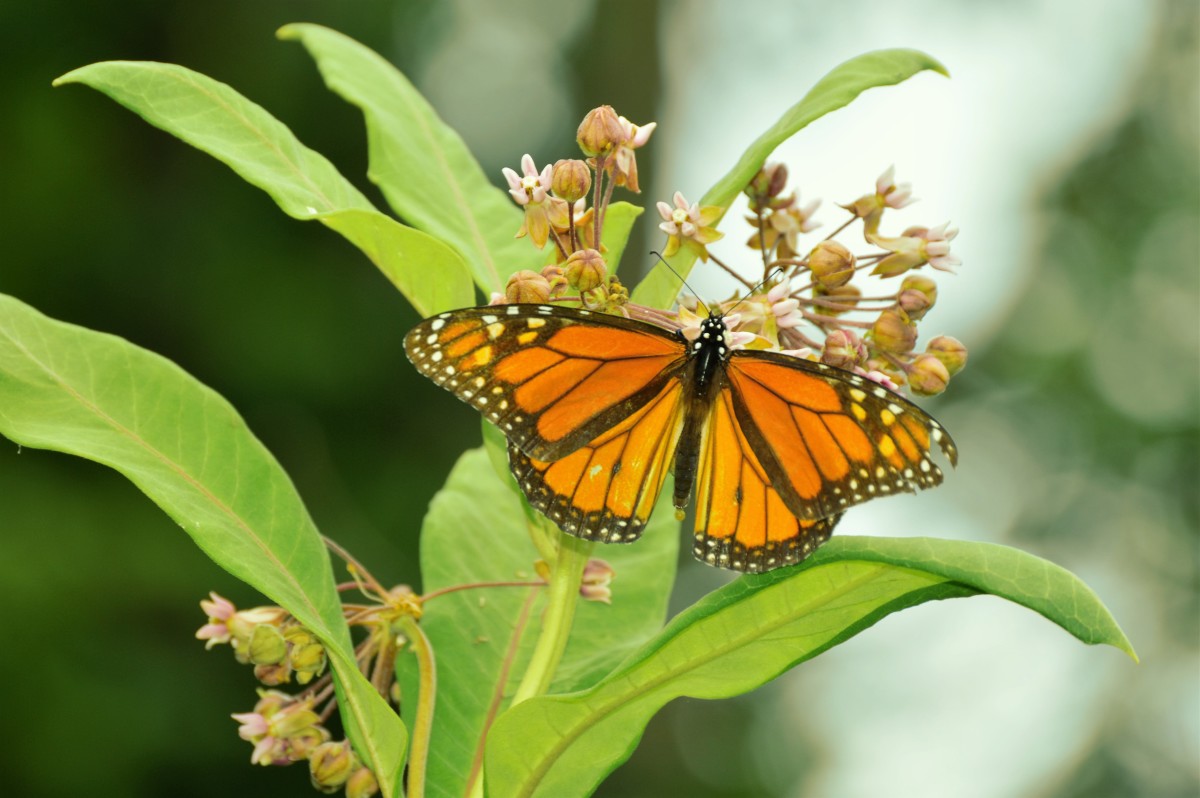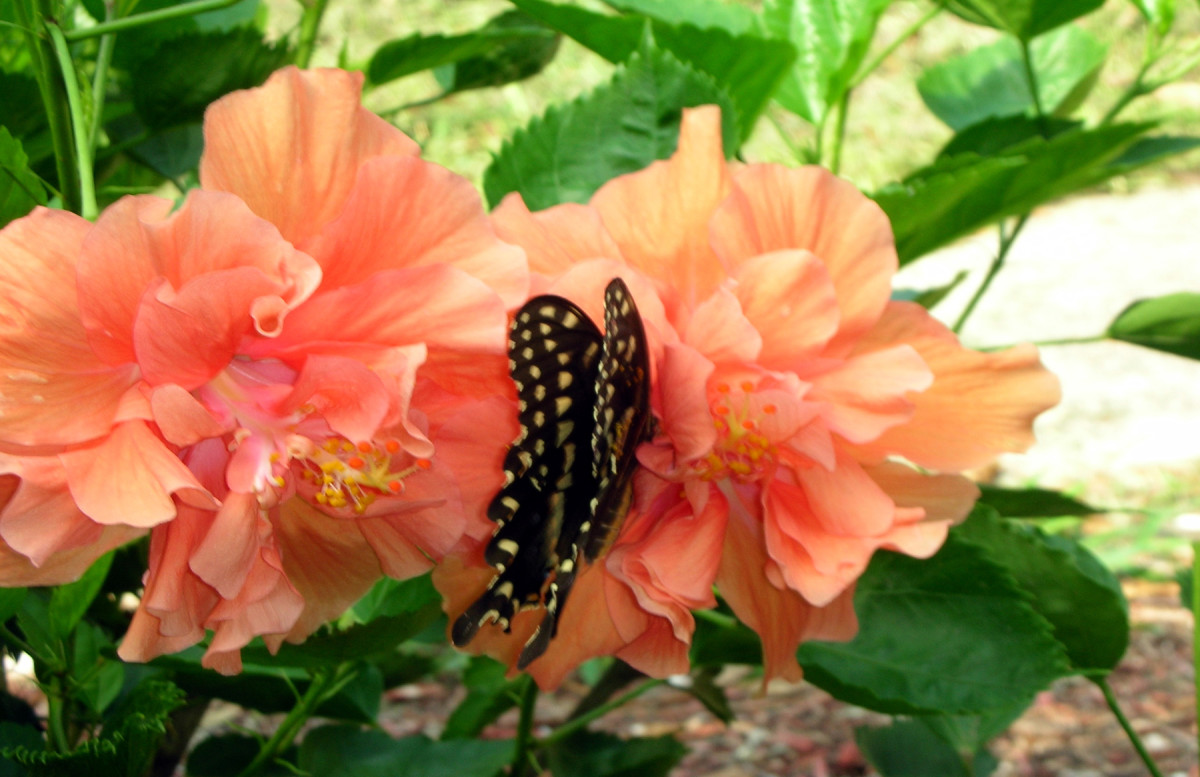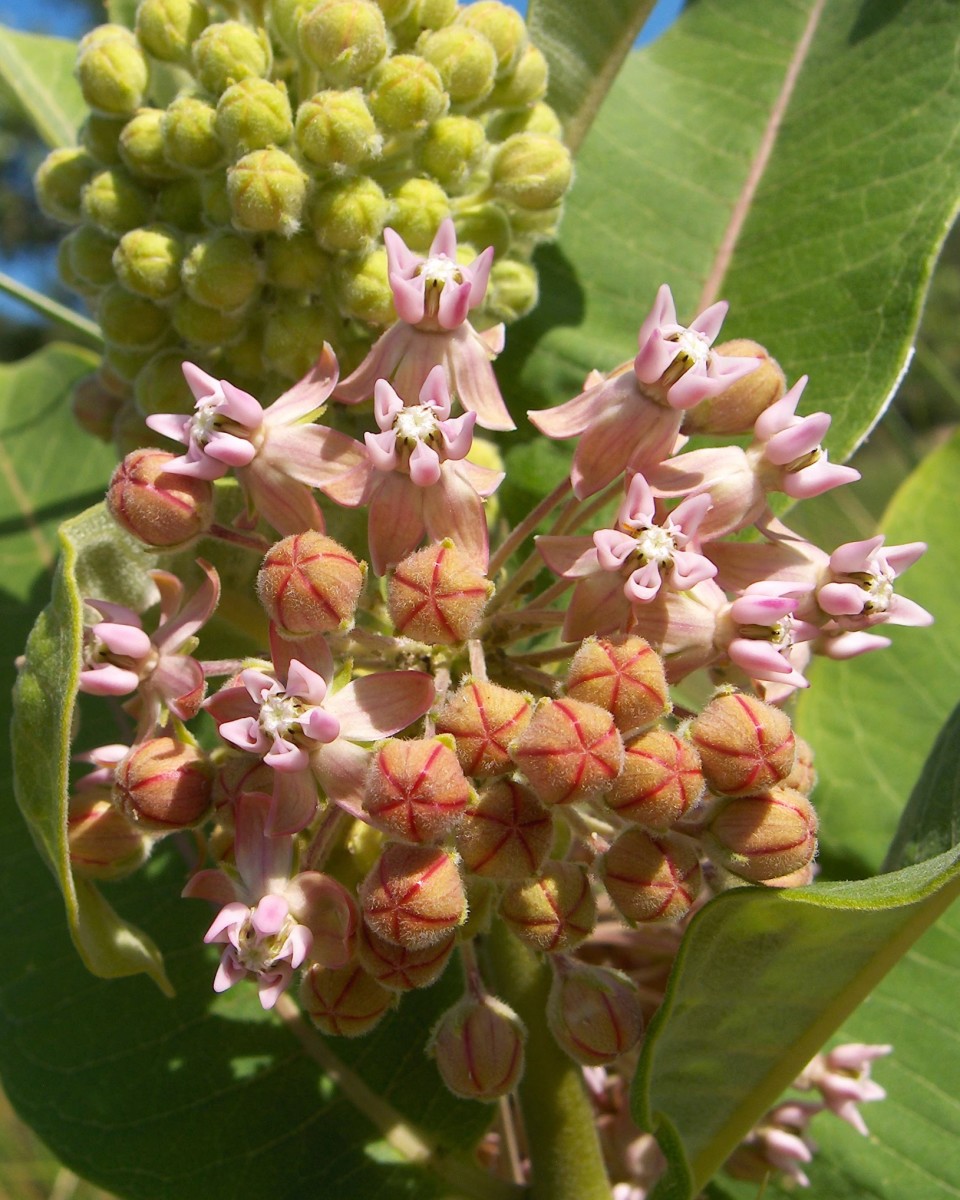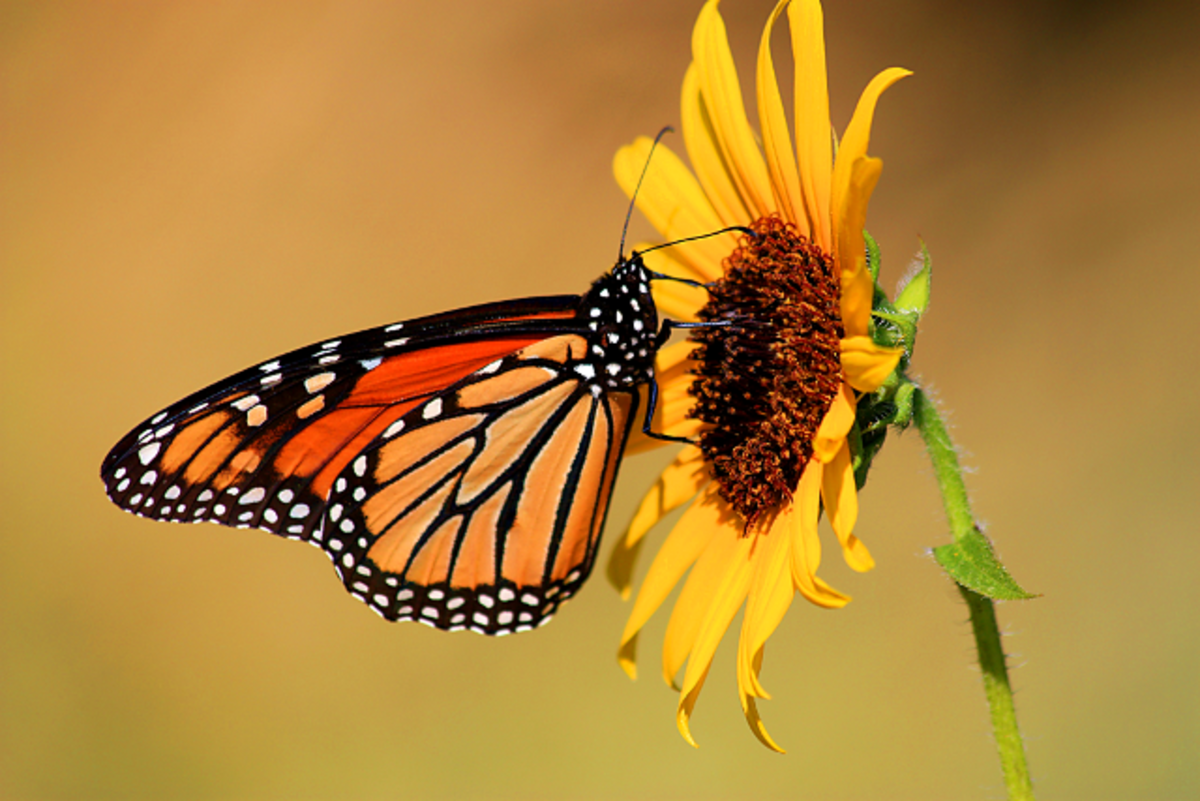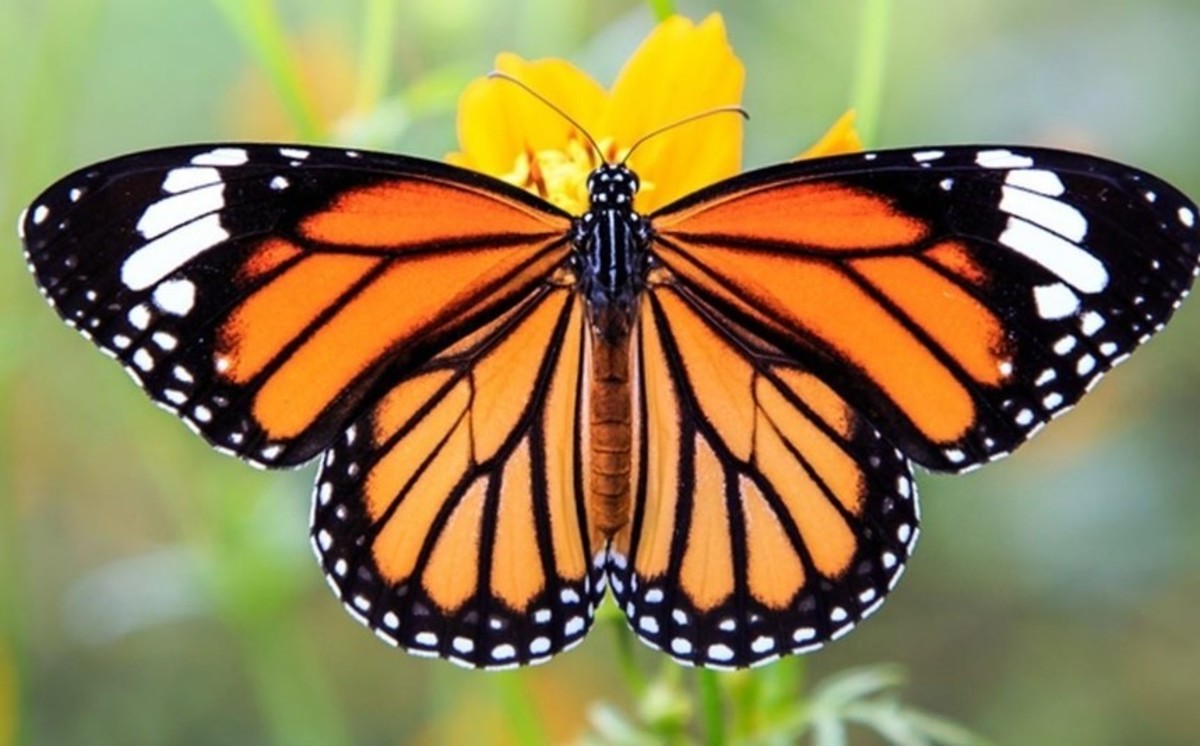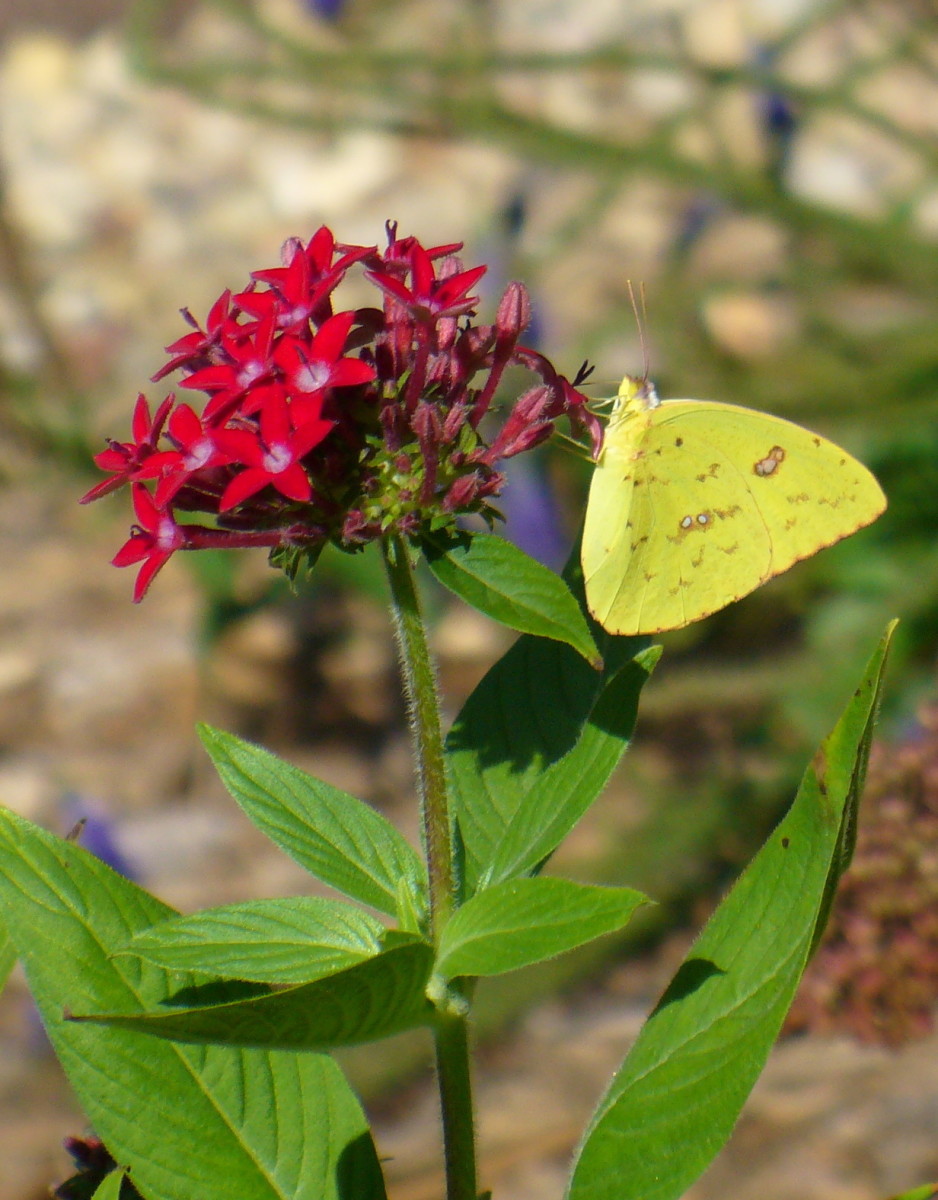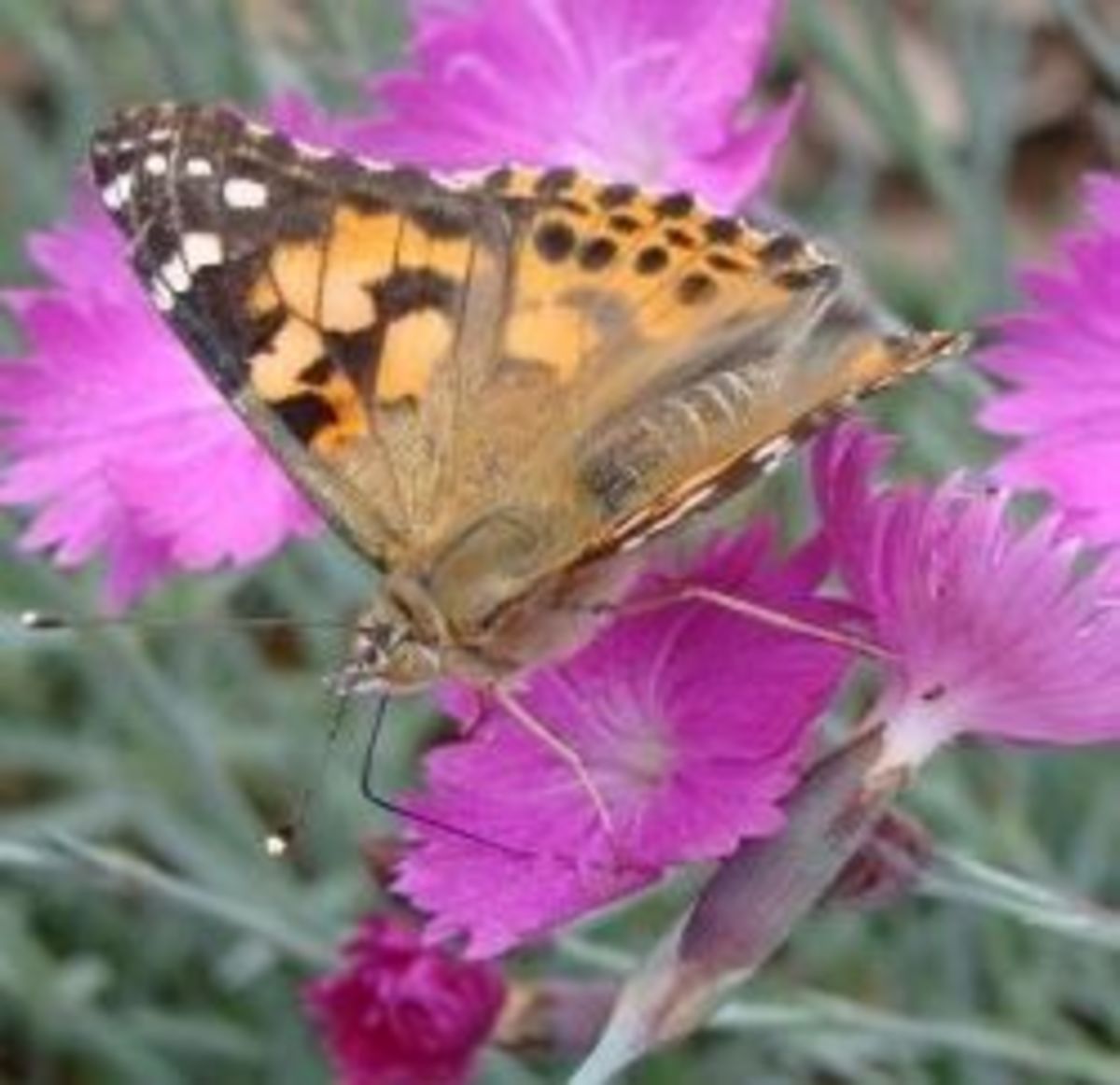- HubPages»
- Education and Science»
- Life Sciences»
- Entomology»
- Insects & Bugs
Annual Migration of the Monarch Butterfly
Monarch Butterfly
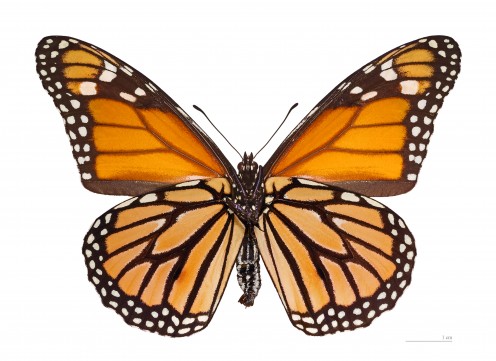
The Monarch Butterfly
The monarch butterfly is one of the most recognizable kind of insects with wings that span anywhere from 8.5 to 10 cm (3-4 inches) and carry upon them a red,orange and black pattern colors. They are found in regions of the north American continent, including Canada, the United States and Mexico. Some Monarchs have been found in Hawaii, Australia, North Africa, the Philippines, Bermuda, Canary Islands and the United Kingdom, but they are rarely seen in colder regions, such as those at the earth´s poles due that they don´t offer the adequate conditions for their reproduction.
Annual Migration of the Monarch Butterfly
One of the most astonishing characteristics of the Monarch Butterfly is their yearly migration. They do so in order to find the adequate climate conditions for their survival and reproduction. Each year, during winter, Monarchs use their own instinct to travel long distances. One of the longest trips they make is to a sanctuary region in central Mexico. This is a trip in which they fly nearly 4800 km (3000 miles). Not all monarch overwinter in Mexico; some monarchs have been found overwintering in California, Arizona ad Florida. All of these places offer adequate grounds for monarchs to spend the winter season.
None of the monarch butterflies live as long so as to make the trip twice, so a new generation makes the long trip to wintering grounds each year. The first generation of monarchs is the one that is born between March and April after the wintering generation leaves the wintering grounds and returns to northern Canada and southern US. On the way, they lay eggs in northern Mexico and southern US and this first generation then become adults as they continue flying north.
The second generation of monarch butterflies is born in between the months of May an June and the third generation will develop around the months of July and August. In each generation, the same four stage life cycle process, lasting anywhere from two to six weeks, is repeated. The fourth generation differs in which the cycle lasts for a longer period of time; this is due that this generation is the one that is going to make the long trip to wintering grounds and stay in hibernating state for around eight months after which they will become active again and start the journey back and on their way they will lay eggs for the first generation.
Monarch flying and speed
Monarchs can travel anywhere between 50 to 100 miles in a single day at the speed of approximately 5 meters per second, depending on the speed and direction of the wind . Some have been recorded to have traveled for more than 200 miles a day
Monarch´s Life Span
The lifespan of butterflies depends on many factors; one of them is size. Smaller butterflies normally have shorter lifespan than those of larger butterflies. Another factor is the climate, for instance if the egg of a butterfly has been laid in a very cold day, the egg will remain in its egg form until the weather gets warmer. As adults, monarchs will always hibernate until the weather turns warmer, in doing so, a butterfly can extend its lifespan. The average life span of butterflies is one month; however, small butterflies usually live for a week or two, while larger ones, can live from one or two months to about 8 months. Monarchs are some of those that can live for 8 months.
Quantity of People Living Along Monarch´s Migration Routes
Have you Seen Monarch Butterflies Flying on their Way to Overwintering Regions During September and October?
Wintering Monarch
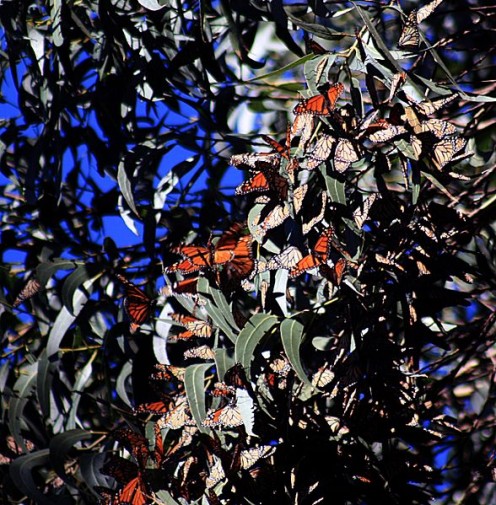
Monarch´s Habitat
The range of habitat varies between migration routes, breeding areas and wintering sites. These habitats offer protection from predators, sufficient sunlight, water streams and roosting vegetation. While overwintering in Mexico, monarchs can be seen roosting in oyamel trees in clusters of hundreds or even thousands in temperatures ranging from 0 to 15° C.
Monarchs that overwinter in California roost in eucalyptus, cypresses and pines where the climate is of a similar nature as the one monarchs find in Mexico. Pines, fir and cedar trees are other types of trees that monarchs choose for roosting. These habitats offer thick canopies and moderate temperatures. As the days get warmer, the monarchs begin to breed and start the long journey back. None of them will arrive north, instead, they will lay eggs for the first generation that will permit the reproduction of the following generations.
Monarch´s Directional Aids
It´s believed that Monarchs use the position of the sun and the magnetic pull of the earth to fly to overwintering locations
Monarch´s Life Cycle
Like most butterflies, the monarch goes through four stages in their life cycle, during which it metamorphoses into an egg then a caterpillar, followed by a chrysallis and finally a butterfly. In the first stage, a female butterfly lays hundreds of eggs, usually under a leave, stem or other object, close to where on larvae or caterpillar stage will be able to find food; after a few days, a larva will hatch from the egg. On the second stage, the caterpillar, which looks like a worm a few millimeters long will eat the shell from which it hatched and then will begin to eat the leaves and start growing.
Monarch Egg Stage
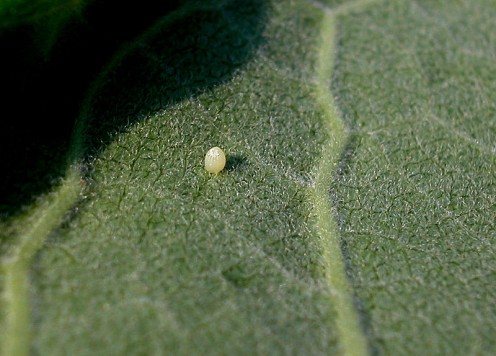
Monarch´s Metamorphosis
While, it is in larvae stage, the caterpillar will not do anything but eat and grow, during which it will shed skin four or more times. On the third stage, the caterpillar has finished growing and turns into a chrysallis or pupa; something that looks like a bag and which is the same color as the surrounding background; this will keep the chrysallis safe from predators. While in the chrysallis stage, the caterpillar metamorphoses into a butterfly.
When the metamorphosis is complete the butterfly breaks out of the chrysallis and let itself adapt to the environment; when the butterfly´s wings have gotten strong, then the butterfly starts flapping and flies away in search of food and soon also of a mate. Soon, the butterfly will start laying eggs and the life cycle will begin again.
Life Cylce of the Monarch Butterfly
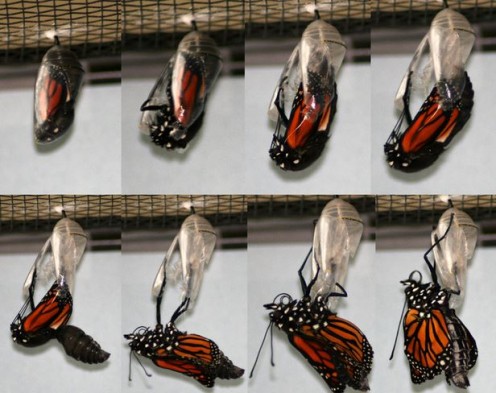
Four Generations of Monarchs in a Year
Generation
| Live
| Hibernate
|
|---|---|---|
First
| two to six weeks
| no
|
Second
| two to six weeks
| no
|
Third
| two to six weeks
| no
|
Fourth
| Two to eight months
| yes
|
Monarch´s Metamorphosis
© 2018 Jose Juan Gutierrez

